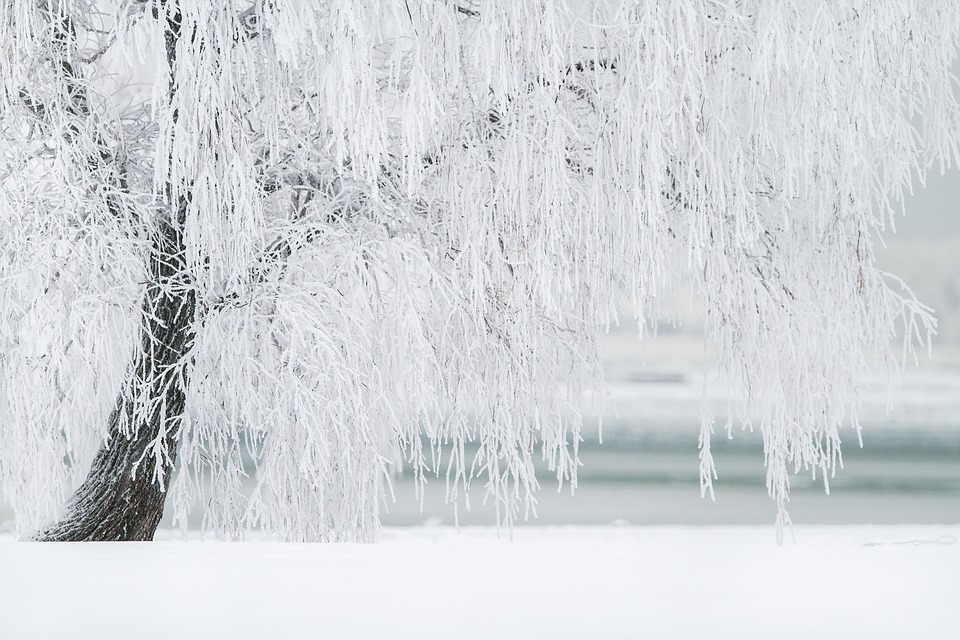Winter storms, particularly ice storms, have caused a lot of problems recently in Canada. A few years ago, we were hit with the polar vortex, causing massive power outages and damage. The ice storm in 1998 caused 6.2 billion dollars in damages, millions without power, injuries, and even deaths.
While the effect on humans is clear, ice storm damage to trees can also be severe and is often the cause of power outages and damage. Broken limbs and uprooted trees are common sights after a bad winter storm. Branch failure occurs when the loading from the weight of the ice exceeds the wood resistance, or when constant loading stresses a weakened area in the branch. Pair this with strong winds and branch failure is almost guaranteed.
Knowing the potential ice storm damage to trees, it is possible to prevent it. We can use the knowledge about the weaknesses and strengths of specific tree species to strategically plant and maintain trees with more resistance in our cities.
 What Makes Trees Susceptible to Ice Storm Damage?
What Makes Trees Susceptible to Ice Storm Damage?
Apart from the power of the winter storm itself, there are a variety of factors that make a tree more susceptible to ice storm damage.
Weaknesses in the tree, present before a storm hits, make it less resistant to ice storm damage. Decay, dead branches, an increased surface area of lateral branches, restricted or unbalanced root systems, shallow root systems, weak branch junctures, and ingrown bark in branch junctures are just a few of the factors that weaken a tree before the storm even hits. Some of these factors occur naturally, such as species of oak trees having a naturally shallow root system, while some can be caused by human interaction, like a construction project damaging and weakening a tree’s root system.
Broad-leafed tree species with broad crowns are more susceptible to ice and snow damage. Species like Silver Maple, Weeping Willow, American Elm, Siberian Elm, Hackberry, Green Ash, White Birch and Honey Locust have broad crowns that are challenged when faced with excessive ice loads. On the other hand, trees with excurrent, or conical, branching patterns, strong branch attachments, and flexible branches are more resistant to ice storm damage to trees, as they are able to withstand higher weights and long storm durations.
Also important to consider is the positioning of trees. Edge trees, or trees that are located on the edge of a forest, are more at-risk than interior trees. They are less sheltered during a storm and bear the brunt of wind more so than interior trees.
Surprisingly, the source of the seeds used in tree planting is significant as well. A recent study found that seeds from trees from northern areas grew into trees that were more resistant to ice storm damage than seeds grown from trees from southern areas. Even when these seeds were grown in the exact same conditions, they had very different levels of resistance to winter weather.
Urban Forestry Management for Ice Storm Damage to Trees
There are many things that urban forestry management can do to prevent ice storm damage to trees and the consequential damage to buildings, roads, and infrastructure.
- Have your trees assessed for any defects or structural issues and make appropriate decision(s)
- Plant trees where they can do the least damage, away from power lines or large buildings, for example
- Remove diseased or injured trees or ensure regular pruning to remove damaged areas
- Remove damaged trees immediately after storms
- Plant tree species that are more resistant to storms
- Plant trees using seeds from northern seed-sourced trees
Species and Practical Examples
Knowing tree species that can resist ice and snow damage from severe winter storms is the first step in incorporating them into an urban forestry management plan and ensuring our trees and infrastructure is safe in future winter storms.
Different characteristics of tree species can make them either good or poor choices for planting in areas that receive heavy snow and ice. Jack pines and sugar maples have a higher chance of dying if they have severe canopy damage, but pitch pine and American beech species have a much better sprouting ability and can recover from severe branch loss. Bradford pear tree branches have ingrown bark in branch junctures, weakening them against heavy snow, while the Aristocrat cultivar of the pear species has stronger branch junctures and can withstand more weight.
Some other examples of trees resistant to ice storm damage to trees are Balsam fir, bur oak, Eastern hemlock, mountain ash, Ohio buckeye, and the Norway maple (some consider this an invasive species). More susceptible trees include the Silver maple, Siberian elm, American elm, black ash, butternut, common hackberry, red elm, and willow.
Knowing the tree species and various characteristics that affect how a tree can withstand ice, snow, and storm damage prepares us to create an urban forestry plan that will foster the growth of more resistant trees. This will help eliminate damage to infrastructure and property by trees after future storms.
To read the entire report and view a list of resistance vs susceptible tree species, visit the recent publication by the University of Nevada Lincoln, Trees and Ice Storms: The Development of Ice Storm–Resistant Urban Tree Populations (Second Edition).
If you’re concerned about ice storm damage to trees on your property this winter, contact P & A. We can assess storm damage and help you prepare your trees for upcoming storms.